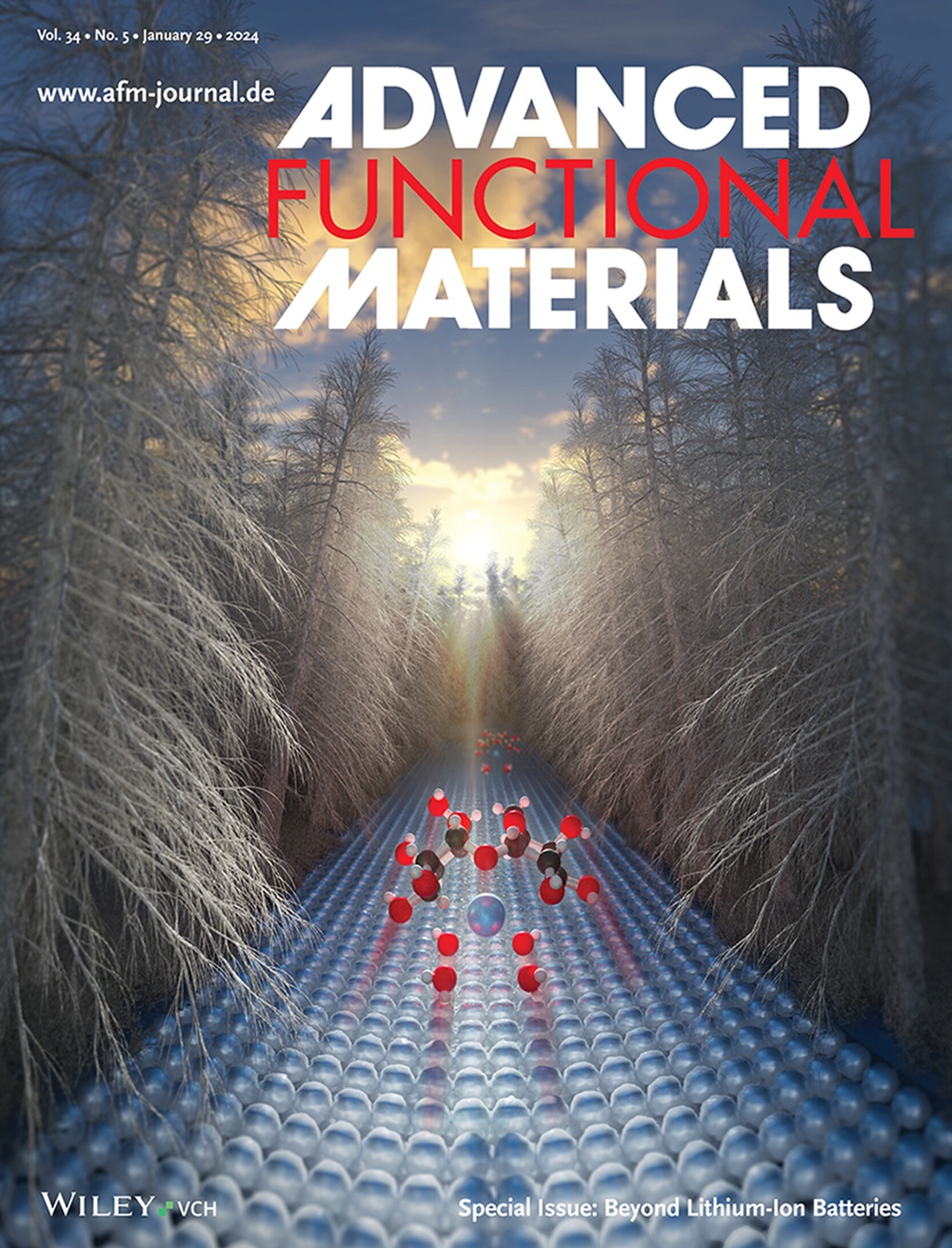Group‐VA Doped ZnO Injection Layer for Bright and Efficient Perovskite Light‐Emitting Diodes
IF 18.5
1区 材料科学
Q1 CHEMISTRY, MULTIDISCIPLINARY
引用次数: 0
Abstract
Heteroatom doping of the ZnO electron injection layer (EIL) is widely applied to the fabrication of high‐performance quantum‐dot and perovskite light‐emitting diodes (PeLEDs), while group‐VA atomic dopant is rarely studied. Here, VA bismuth (Bi) with strong metallicity is screened as a substitution dopant to regulate the colloid size, surface terminal, and defect density of the ZnO precursor. The as‐fabricated Bi‐doped ZnO (ZnBiO) EIL shows enhanced conductivity, passivated trap states, more n‐type nature, and appropriate band alignment with FAPbI掺杂基团-VA 的氧化锌注入层用于明亮高效的 Perovskite 发光二极管
氧化锌电子注入层(EIL)的杂原子掺杂被广泛应用于高性能量子点和过氧化物发光二极管(PeLED)的制造,而族-VA 原子掺杂却很少被研究。本文筛选了具有强金属性的 VA 铋(Bi)作为替代掺杂剂,以调节 ZnO 前驱体的胶体尺寸、表面终端和缺陷密度。制备出的掺铋氧化锌(ZnBiO)EIL 显示出更强的导电性、钝化阱态、更多的 n 型性质,以及与 FAPbI3(FA:甲脒)的适当带排列,从而有助于形成具有最小传输损耗的平滑注入路径。在 ZnBiO 受抑制的羟基端接的促进下,FAPbI3 晶体生长成具有更高结晶度和面积厚度比的扁平纳米圆柱畴,使 PeLED 效率达到 22.3%,近红外辐射率高达 684 W sr-1 m-2,工作稳定性提高了近一个数量级。
本文章由计算机程序翻译,如有差异,请以英文原文为准。
求助全文
约1分钟内获得全文
求助全文
来源期刊

Advanced Functional Materials
工程技术-材料科学:综合
CiteScore
29.50
自引率
4.20%
发文量
2086
审稿时长
2.1 months
期刊介绍:
Firmly established as a top-tier materials science journal, Advanced Functional Materials reports breakthrough research in all aspects of materials science, including nanotechnology, chemistry, physics, and biology every week.
Advanced Functional Materials is known for its rapid and fair peer review, quality content, and high impact, making it the first choice of the international materials science community.
 求助内容:
求助内容: 应助结果提醒方式:
应助结果提醒方式:


